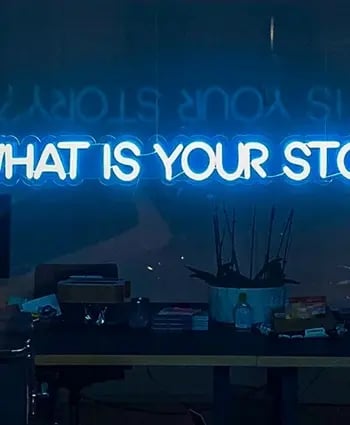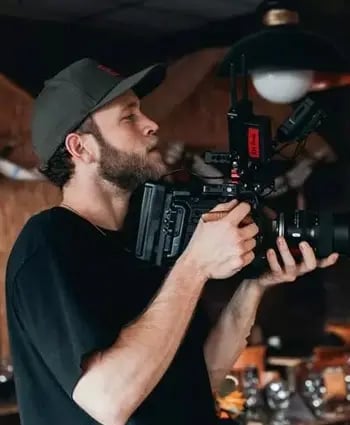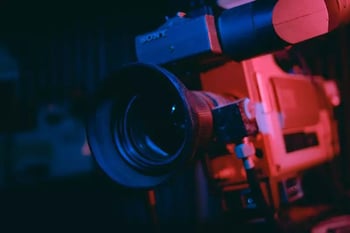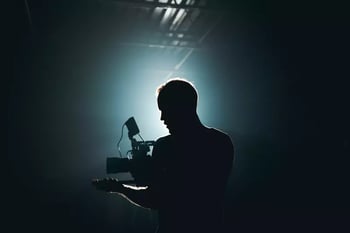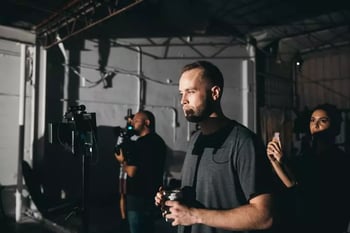The Magic of Green Screen: Best Practices and Uses
Dive into chroma key magic! Explore green screen secrets, best practices, and how marketers can transport audiences anywhere, all from the studio.
Let's play a little game of imagination. Picture a marketer, maybe even yourself, standing amidst a bustling cityscape one minute, then whisked off to a serene beach the next. All this without moving an inch! Sounds like magic, doesn't it? Well, it's the magic of the green screen, and if you've ever wondered how filmmakers make the impossible possible, you're about to get a backstage pass.
1. What's the Big Deal About Green?
Green screens, often referred to as 'chroma key', are used to make certain colours (typically bright green) disappear from videos, allowing a different background to be inserted. The green hue is preferred because it's less likely to match a natural skin tone, ensuring that humans (and not just their surroundings) don’t vanish into thin air!
2. The Marketing Goldmine
For marketers, the green screen is like a Swiss Army knife. Launching a global campaign but can't jet-set around the world? No problem. With a green screen, you can 'place' your product anywhere, from the Eiffel Tower to the Sahara Desert, all from the comfort of your studio. It’s a fantastic tool for storytelling, creating surreal visuals, or simply adding a touch of Hollywood glamour to your campaign.
3. Setting the Scene Right
While it sounds straightforward, using a green screen requires precision. It's essential to have even lighting without shadows to ensure the green is consistent. Trust me, you don’t want patchy spots – they're a post-production nightmare.
4. Wardrobe Watch-Out
Remember the golden rule: green is a no-go. If your subject wears green, they'll blend into the background, creating a see-through effect. So unless you're trying to make floating heads for a Halloween campaign, advise against green attire.
5. Motion and Markers
If there’s movement involved, like an actor gesturing or walking, markers can be a godsend. These are small, non-green reference points placed on the screen, which can guide post-production editing, ensuring everything remains seamless.
6. The Post-Production Party
This is where the real magic happens. Special software removes the green hue, replacing it with your chosen backdrop. It's like Photoshop, but for videos. The key is to be meticulous. Edges should be refined to ensure subjects don’t have a green halo or a jagged outline.
7. Beyond the Basics
While most think of green screens for background replacements, there's so much more to explore! Want to create a floating infographic next to your presenter? Or how about an imaginative scene with oversized products raining down? With a green screen, your creativity is the only limit.
8. Real vs. Virtual: When to Go Green?
Now, while the green screen is ace, it doesn't mean every video should be shot with one. Sometimes, authentic locations provide a touch of realism that a studio setup can't. It’s all about weighing the practicalities and your campaign's desired feel.
Wrapping up
Peeling back the curtain on the world of green screen reveals a technique that’s as much about meticulous planning as it is about post-production wizardry. And for marketers, it's an invaluable tool, opening doors to unbounded creativity and storytelling avenues. So next time you're crafting a visual narrative and want to sprinkle a bit of that cinematic fairy dust, remember the magic of the green screen. Who knows, it might just be your ticket to the next blockbuster campaign.

Written by Emily Malone Marketing Manager for Venture — a full-service video production agency that specialises in producing creative videos & campaigns that get real results.

